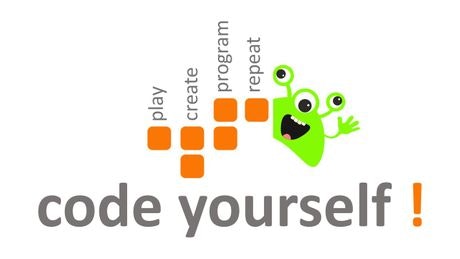Back to Courses









Computer Science Courses - Page 17
Showing results 161-170 of 2309

Solving Algorithms for Discrete Optimization
Discrete Optimization aims to make good decisions when we have many possibilities to choose from. Its applications are ubiquitous throughout our society. Its applications range from solving Sudoku puzzles to arranging seating in a wedding banquet. The same technology can schedule planes and their crews, coordinate the production of steel, and organize the transportation of iron ore from the mines to the ports. Good decisions on the use of scarce or expensive resources such as staffing and material resources also allow corporations to improve their profit by millions of dollars. Similar problems also underpin much of our daily lives and are part of determining daily delivery routes for packages, making school timetables, and delivering power to our homes. Despite their fundamental importance, these problems are a nightmare to solve using traditional undergraduate computer science methods.
This course is intended for students who have completed Advanced Modelling for Discrete Optimization. In this course, you will extend your understanding of how to solve challenging discrete optimization problems by learning more about the solving technologies that are used to solve them, and how a high-level model (written in MiniZinc) is transformed into a form that is executable by these underlying solvers. By better understanding the actual solving technology, you will both improve your modeling capabilities, and be able to choose the most appropriate solving technology to use.
Watch the course promotional video here: https://www.youtube.com/watch?v=-EiRsK-Rm08

Modernizing Applications with Apigee X
This is a self-paced lab that takes place in the Google Cloud console.
In this lab, you deploy a backend service on Cloud Run. The backend service implements a REST API for a bank, storing customers, accounts, ATMs, and transactions in a Firestore database. You create a shared flow that retrieves and caches content from an external service. You then call that shared flow from your API proxy, and use JavaScript code to modify an API response.

Analysis of Algorithms
This course teaches a calculus that enables precise quantitative predictions of large combinatorial structures. In addition, this course covers generating functions and real asymptotics and then introduces the symbolic method in the context of applications in the analysis of algorithms and basic structures such as permutations, trees, strings, words, and mappings.
All the features of this course are available for free. It does not offer a certificate upon completion.

Life Expectancy Prediction Using Machine Learning
In this hands-on project, we will train a Linear Regression model to predict life expectancy. The dataset was initially obtained from the World Health Organization (WHO) and United Nations Websites. Data contains features such as year, status, life expectancy, adult mortality, infant deaths, percentage of expenditure, and alcohol consumption.

Finding Mutations in DNA and Proteins (Bioinformatics VI)
In previous courses in the Specialization, we have discussed how to sequence and compare genomes. This course will cover advanced topics in finding mutations lurking within DNA and proteins.
In the first half of the course, we would like to ask how an individual's genome differs from the "reference genome" of the species. Our goal is to take small fragments of DNA from the individual and "map" them to the reference genome. We will see that the combinatorial pattern matching algorithms solving this problem are elegant and extremely efficient, requiring a surprisingly small amount of runtime and memory.
In the second half of the course, we will learn how to identify the function of a protein even if it has been bombarded by so many mutations compared to similar proteins with known functions that it has become barely recognizable. This is the case, for example, in HIV studies, since the virus often mutates so quickly that researchers can struggle to study it. The approach we will use is based on a powerful machine learning tool called a hidden Markov model.
Finally, you will learn how to apply popular bioinformatics software tools applying hidden Markov models to compare a protein against a related family of proteins.

Fake News Detection with Machine Learning
In this hands-on project, we will train a Bidirectional Neural Network and LSTM based deep learning model to detect fake news from a given news corpus. This project could be practically used by any media company to automatically predict whether the circulating news is fake or not. The process could be done automatically without having humans manually review thousands of news related articles.
Note: This course works best for learners who are based in the North America region. We’re currently working on providing the same experience in other regions.

Use Docker at AWS with the Command Line
Docker management in the Cloud is a valuable skill to have if you want to be a Docker administrator, a Docker user, or just want to learn more about Docker in the Cloud. Many businesses have already moved their IT assets to the Cloud and many more are in the process.
At the end of this project, you will know how to launch an Amazon Web Services (AWS) Linux server and then install and manage Docker on it remotely using a command line tool.

Code Yourself! An Introduction to Programming
Have you ever wished you knew how to program, but had no idea where to start from? This course will teach you how to program in Scratch, an easy to use visual programming language. More importantly, it will introduce you to the fundamental principles of computing and it will help you think like a software engineer.

Introduction to Back-End Development
Welcome to Introduction to Back-End Development, the first course in the Meta Back-End Developer program.
This course is a good place to start if you want to become a web developer. You will learn about the day-to-day responsibilities of a web developer and get a general understanding of the core and underlying technologies that power the internet. You will learn how front-end developers create websites and applications that work well and are easy to maintain.
You’ll be introduced to the core web development technologies like HTML and CSS and get opportunities to practice using them. You will also be introduced to modern UI frameworks such as Bootstrap and React that make it easy to create interactive user experiences.
By the end of the course, you will be able to:
- Describe the front-end developer role
- Explain the core and underlying technologies that power the internet
- Use HTML to create a simple webpage
- Use CSS to control the appearance of a simple webpage
- Explain what React is
- Describe the applications and characteristics of the most popular UI frameworks
For the final project in this course, you will create and edit a webpage using HTML and the Bootstrap CSS framework. Using a responsive layout grid, you will construct a responsive webpage containing text and images that looks great on any size screen.
This is a beginner course intended for learners eager to learn the fundamentals of web development. To succeed in this course, you do not need prior web development experience, only basic internet navigation skills and an eagerness to get started with coding.

Image Data Augmentation with Keras
In this 1.5-hour long project-based course, you will learn how to apply image data augmentation in Keras. We are going to focus on using the ImageDataGenerator class from Keras’ image preprocessing package, and will take a look at a variety of options available in this class for data augmentation and data normalization.
Since this is a practical, project-based course, you will need to prior experience with Python programming, convolutional neural networks, and Keras with a TensorFlow backend.
Data augmentation is a technique used to create more examples, artificially, from an existing dataset. This is useful if your dataset is small and you want to increase the number of examples. Data augmentation can often solve over-fitting so that your model generalizes well after training. For images, a variety of augmentation can be applied to increase the number of examples.
Note: This course works best for learners who are based in the North America region. We’re currently working on providing the same experience in other regions.
Popular Internships and Jobs by Categories
Browse
© 2024 BoostGrad | All rights reserved


